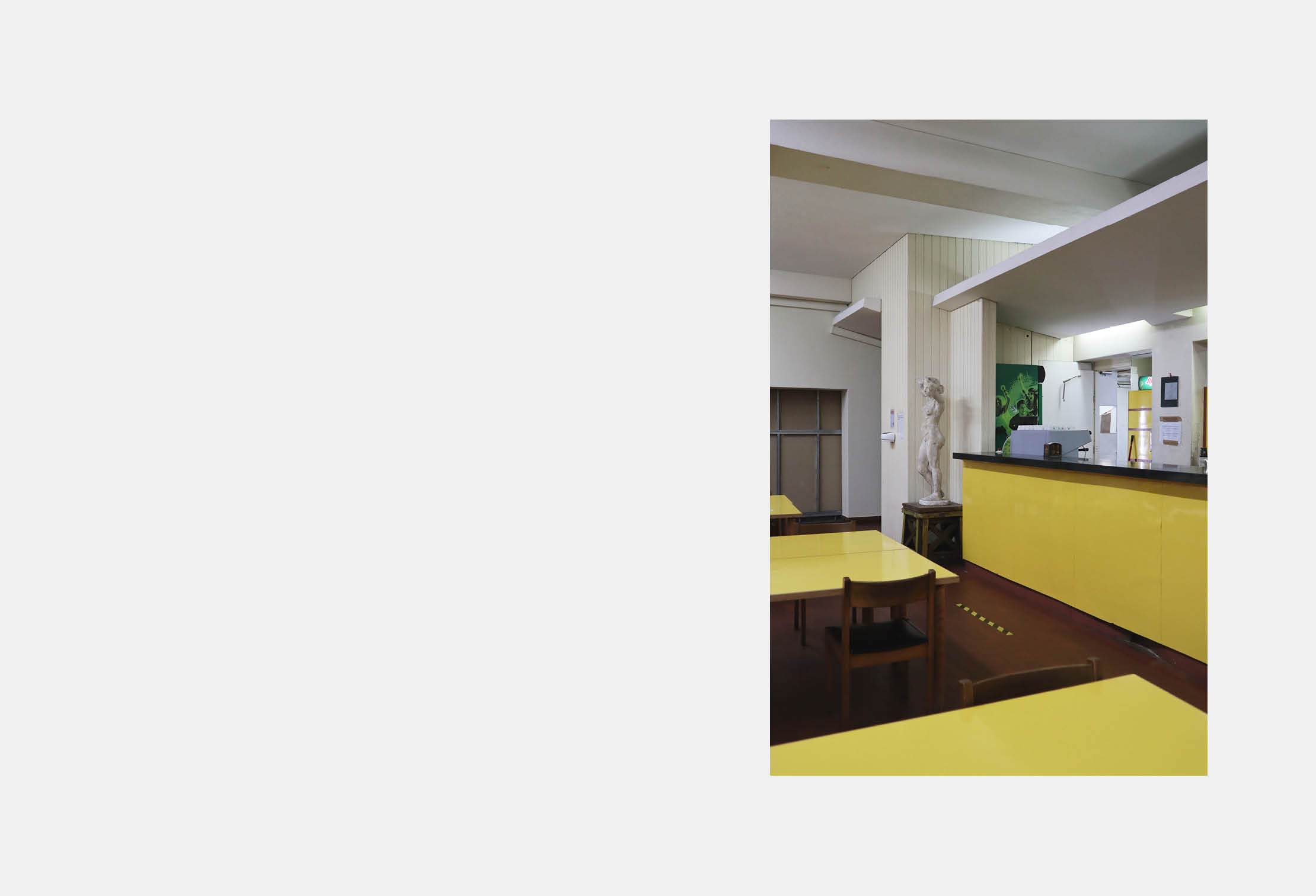“Folha de Sala” aims to explore the Faculty of Fine Arts of the University of Porto (FBAUP) as an in-between space, working beyond the idea of in-between as “transition” and displaying it as a portrait of the fine line between the extraordinary and the mundane. It looks for contrast and singularity, while expanding outside what’s considered common, and rises from looking at the different dynamics that happen with the use of the space.
The faculty (FBAUP) is located next to the city center. Nevertheless, it fades away behind walls. It awakens the inevitable interest in the idea of what is unseen. Therefore, the project follows two processes of thought; on the one hand, it captures what is usually overlooked, and on the other, it follows a natural, almost intuitive way of portraying those spaces that might be “invisible” but are also highly accurate representations of reality.
The narrative produces its own dynamic and contrast with the title. “Folha de Sala” is what’s commonly used on exhibitions, which the visitors can take in their hand and that tries to introdu- ce, explain, and translate what’s being displayed to paper form. Even though it is ordinarily used as a way to document, here it is used as a lens to observe and to add value to the space of the faculty. The photographs were taken with the intent of capturing, in a passive, non-disruptive way, the freedom of appropriation that takes place in these “non-places” and display it by reinforcing its role in the non-stop construction of the dynamic between the user, space, and time.
It follows along the natural line of fundamental artistic value and aesthetics deeply connected to the function of the space, teaching fine arts, and it takes framing, composition, and plasticity as tools to build the image and explore this space where art is born, where it grows and simply just lays. It looks ceaselessly for the contrast between the conscious and unconscious ways appro- priation takes place, with a rhythm imposed by the human hand and that becomes, effortlessly, in art itself.
The visual strategy is built always both by contrast and compari- son and finds its balance on the harmony of the composition and strong sense of color of each image. It relates to the anthropologi- cal aspect of life itself by letting the objects build the composition, with no hierarchy other than looking exactly like it is.


 Porto (centro) Campus
Porto (centro) Campus

















